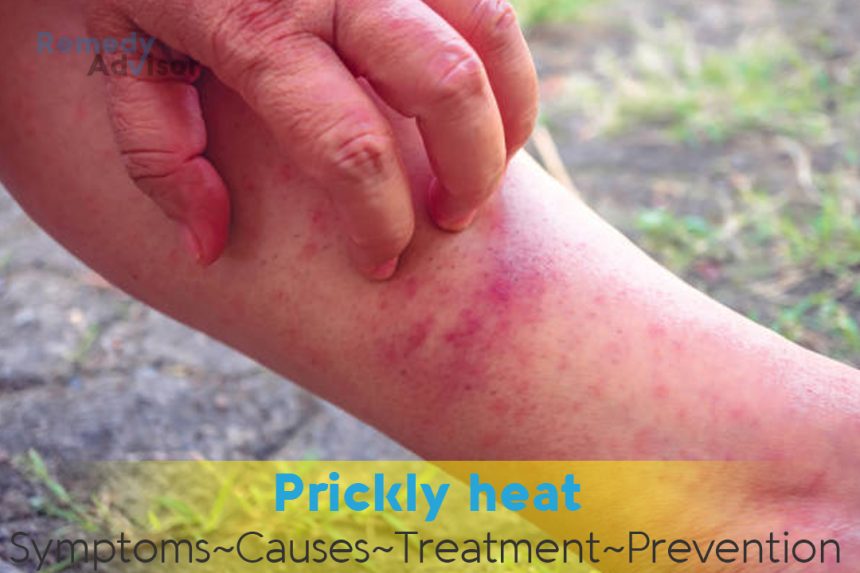What is it
Prickly heat, also known as heat rash or miliaria, can occur during childhood or adulthood, but is most common in infants and very young children. The rash appears when sweat builds up under the skin and can’t escape properly usually in areas where skin surfaces overlap, such as the neck, underarms, or groin. Prickly heat usually occurs in hot and humid conditions, but fever or being overdressed in cooler weather can also trigger it. Older children and adults usually display symptoms on areas of skin that have been heavily covered with clothing.
Symptoms
- Pink, itchy rash that often develops in the folds of the skin around the neck, upper back, armpits, and the diaper area. The rash is sometimes accompanied by tiny bumps or fluid-filled blisters.
- Rarely, intense itching or burning (when rash is severe).
What causes it
When sweating is profuse, the pores leading to the ducts of the sweat glands can become blocked. This prevents the skin from releasing sweat, which is the body’s natural way of cooling off. The sweat is held within the skin, and subsequently, the rash forms. Infants are most at risk for prickly heat because their sweat glands are still developing and consequently are more likely to be over- whelmed when heat and humidity rise.
What if you do nothing
Though not harmful, prickly heat is uncomfortable and is likely to make infants irritable and restless. Simply by keeping your child (or yourself) cool, clean, and dry, the rash should clear up completely within two to three days.
Home remedies
Here are two ways to ease symptoms. The prevention tips below will also help.
Use calamine lotion
Apply it to the worst areas to ease itching.
Take frequent cool or lukewarm baths
This will help cool overheated skin. Using mild soaps helps prevent further skin irritation. Be sure to dry the skin thoroughly with a soft towel.
Prevention
Stay cool
In hot and humid conditions, avoid direct sun and high temperatures. Try to stay in the shade or indoors during the hottest periods, usually between 11 AM and 3 PM. If possible, put a child in an air-conditioned room; otherwise, use a fan.
Dress appropriately
Clothing made of cotton or other breathable fabrics should be worn to facilitate cooling and the evaporation of sweat. In cold weather, avoid overdressing. When indoors, remove excess and unnecessary layers of clothing.
Keep the skin dry
Avoid greasy ointments and lotions. They can hold moisture in and further clog the pores. They also tend to keep the skin warmer. If an infant is perspiring heavily, applying a powder such as talc or cornstarch can help absorb excessive perspiration. Put the powder into your hand first and apply sparingly, so that the child doesn’t inhale any particles, which may cause lung injury.







